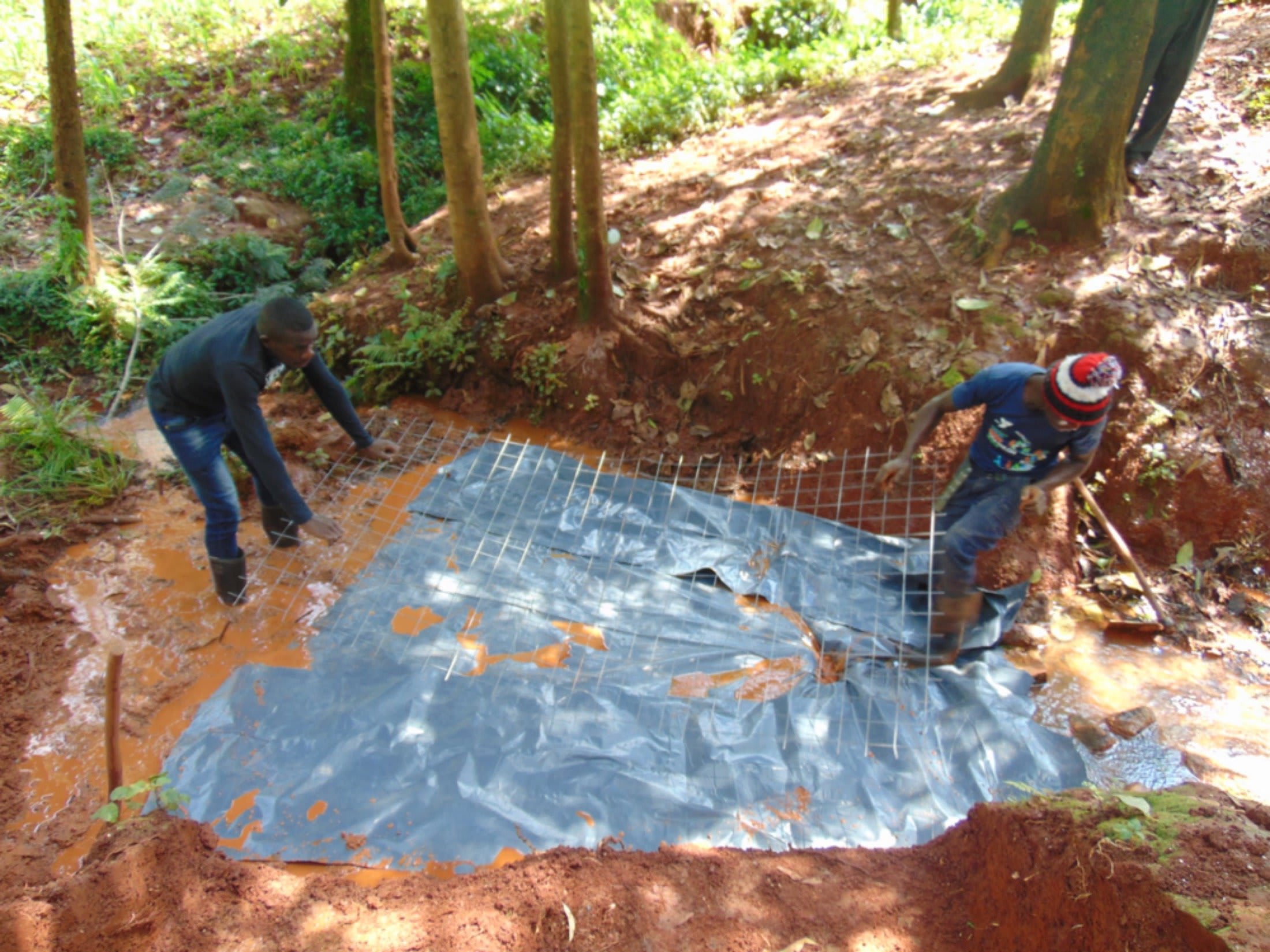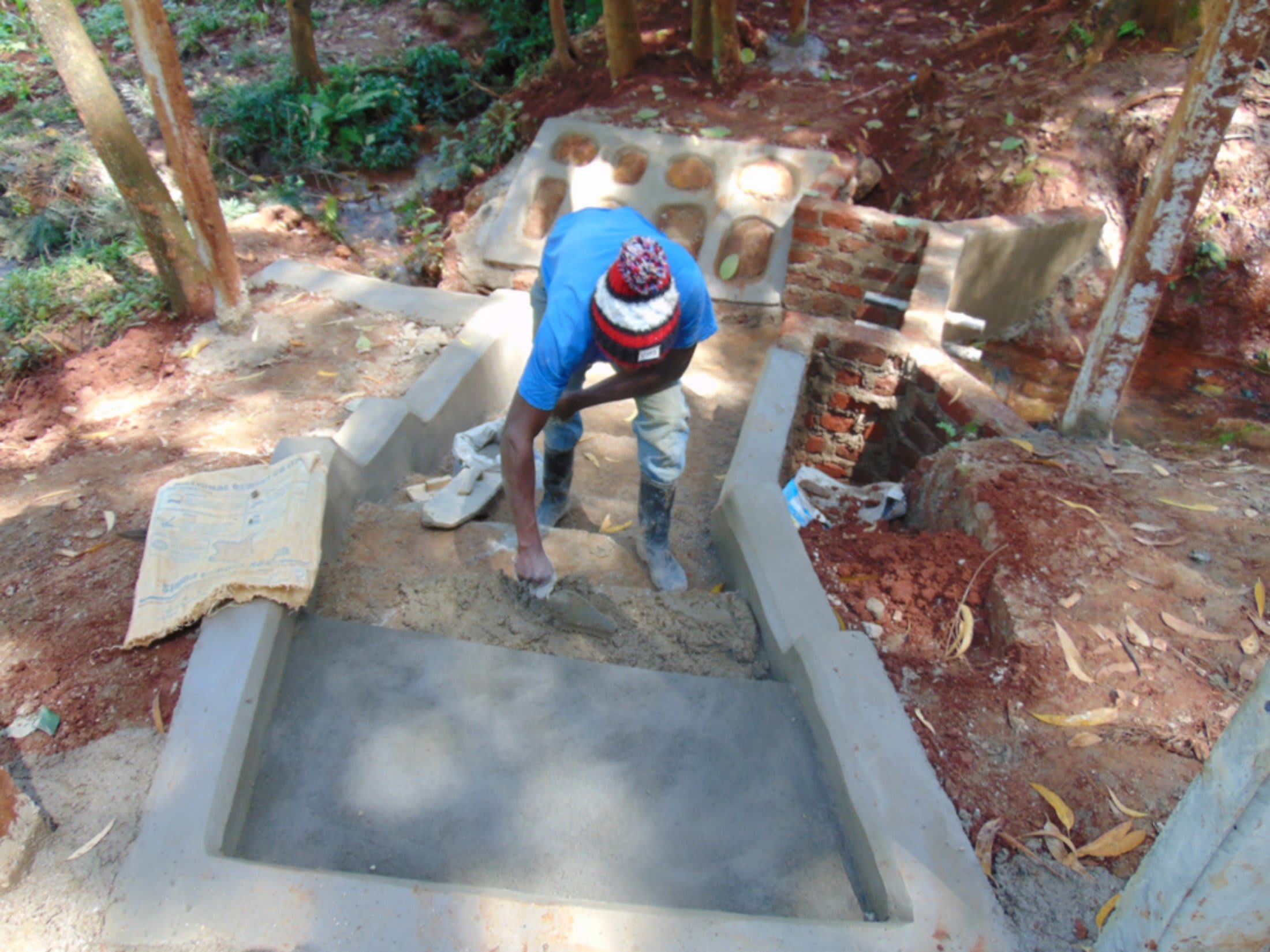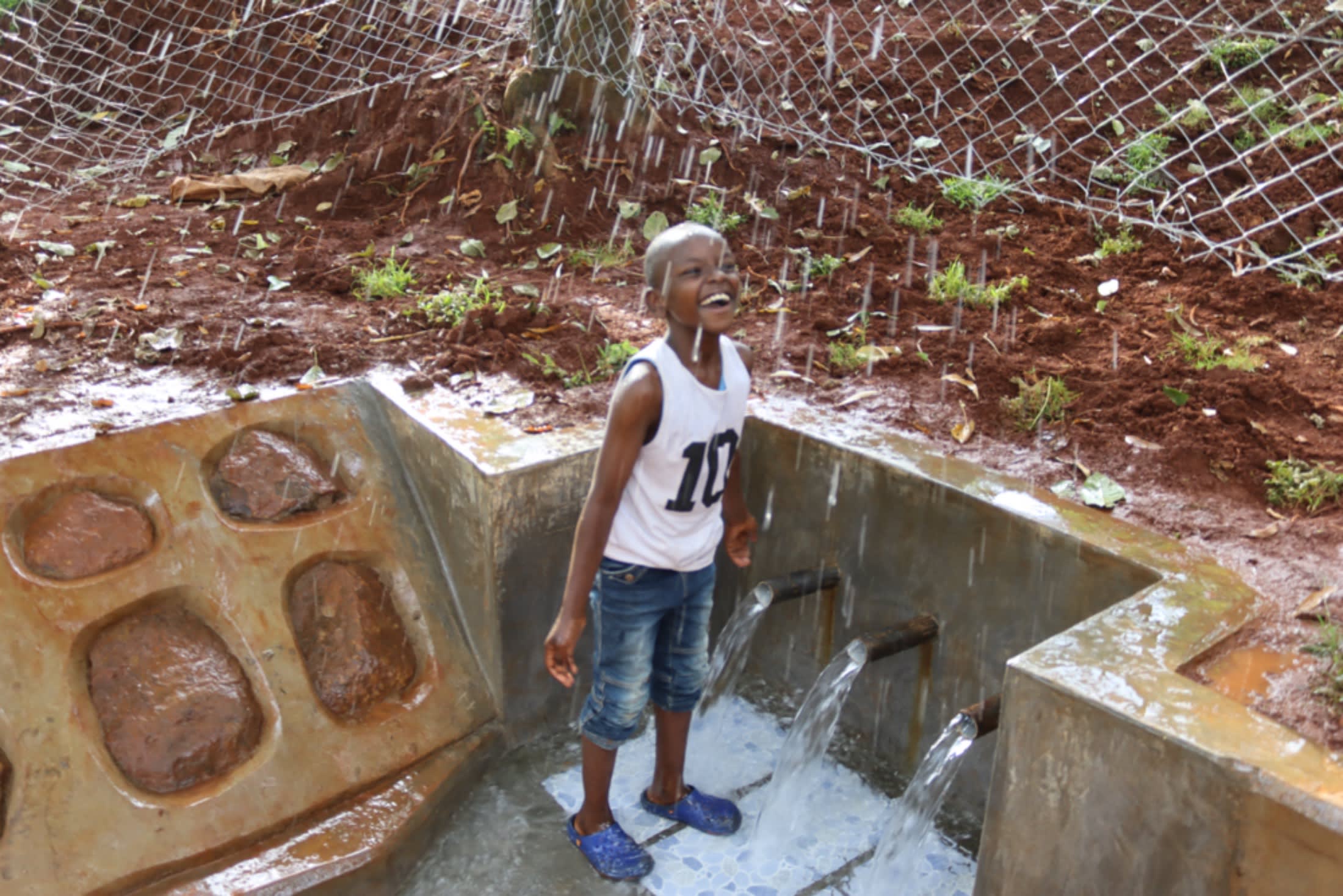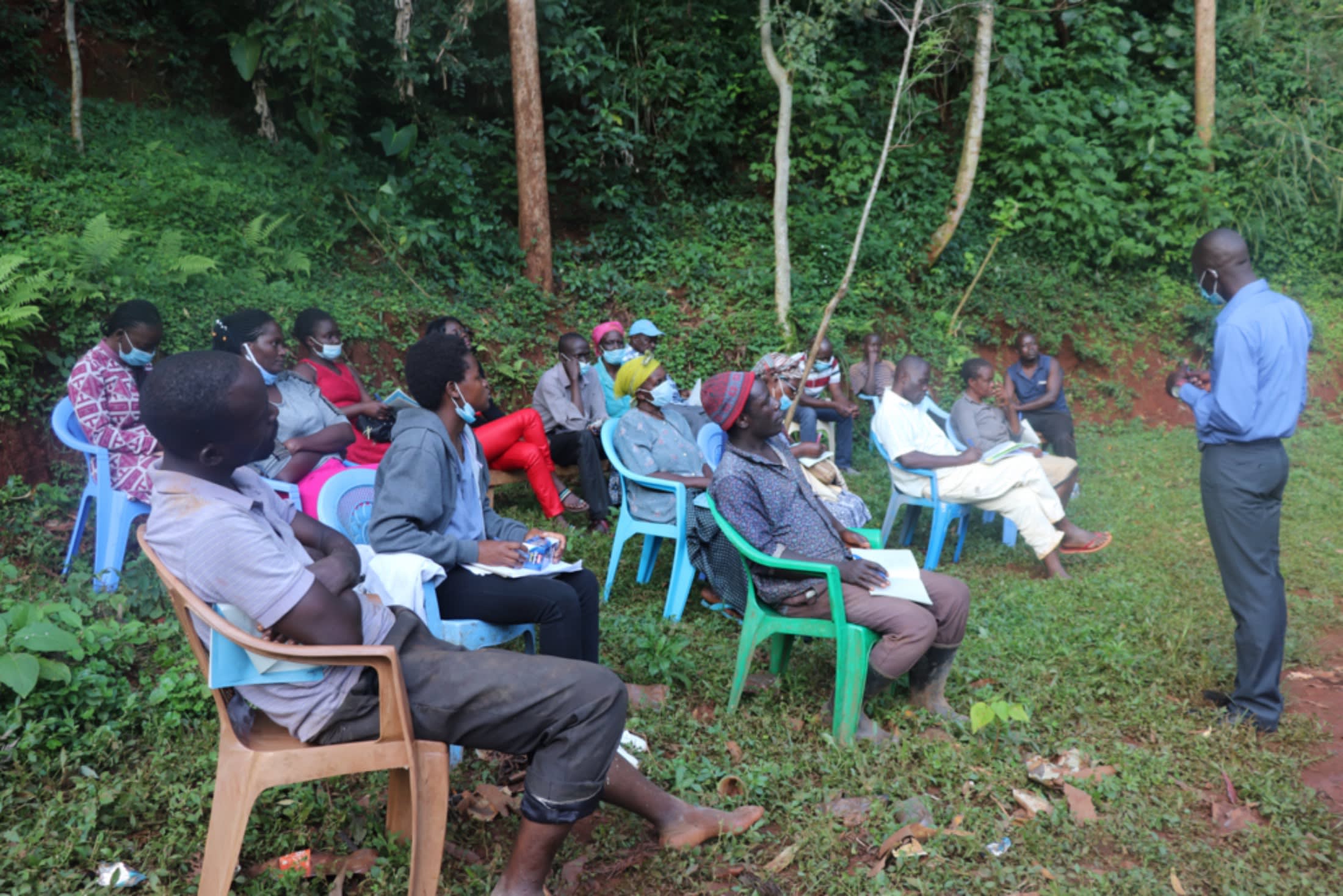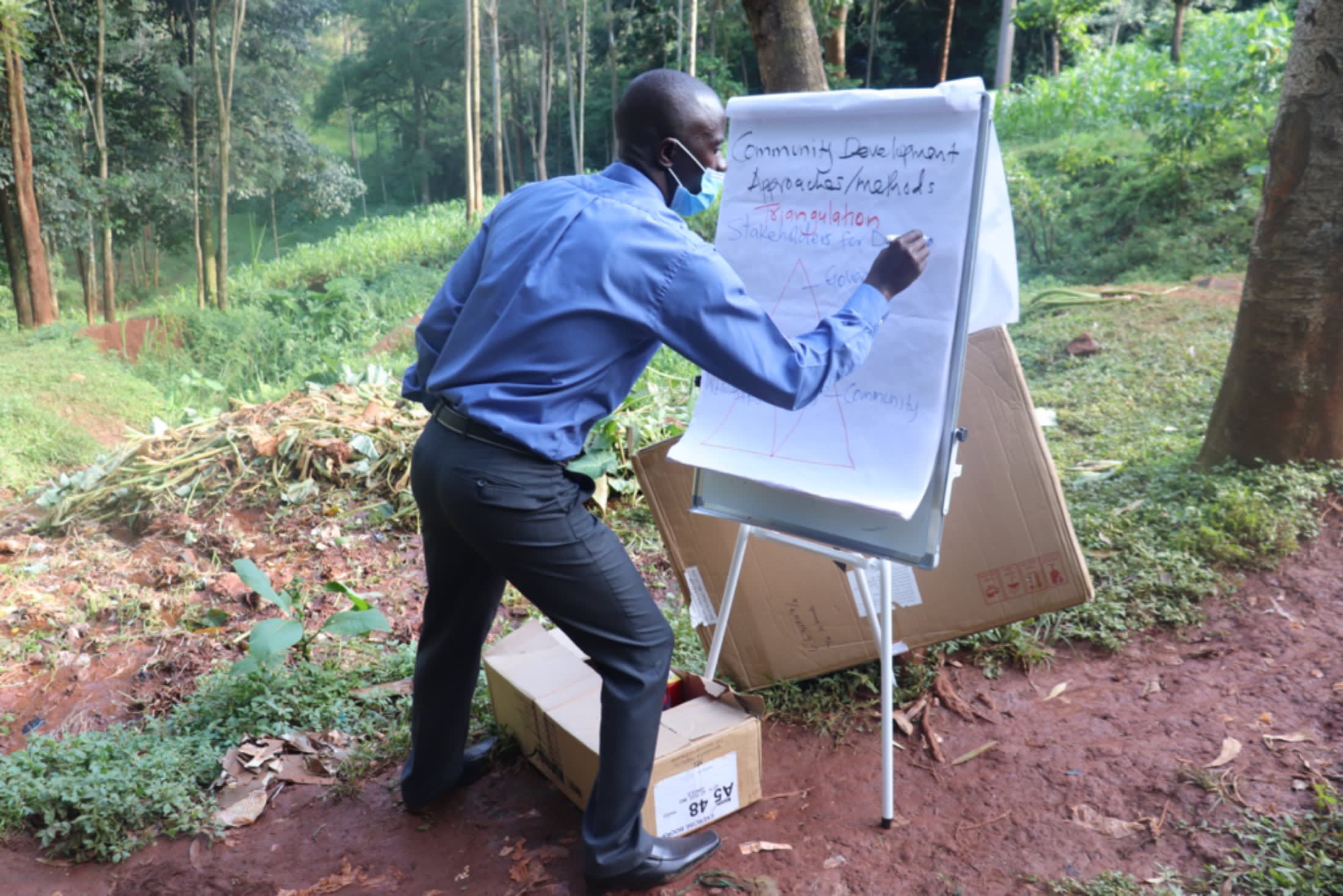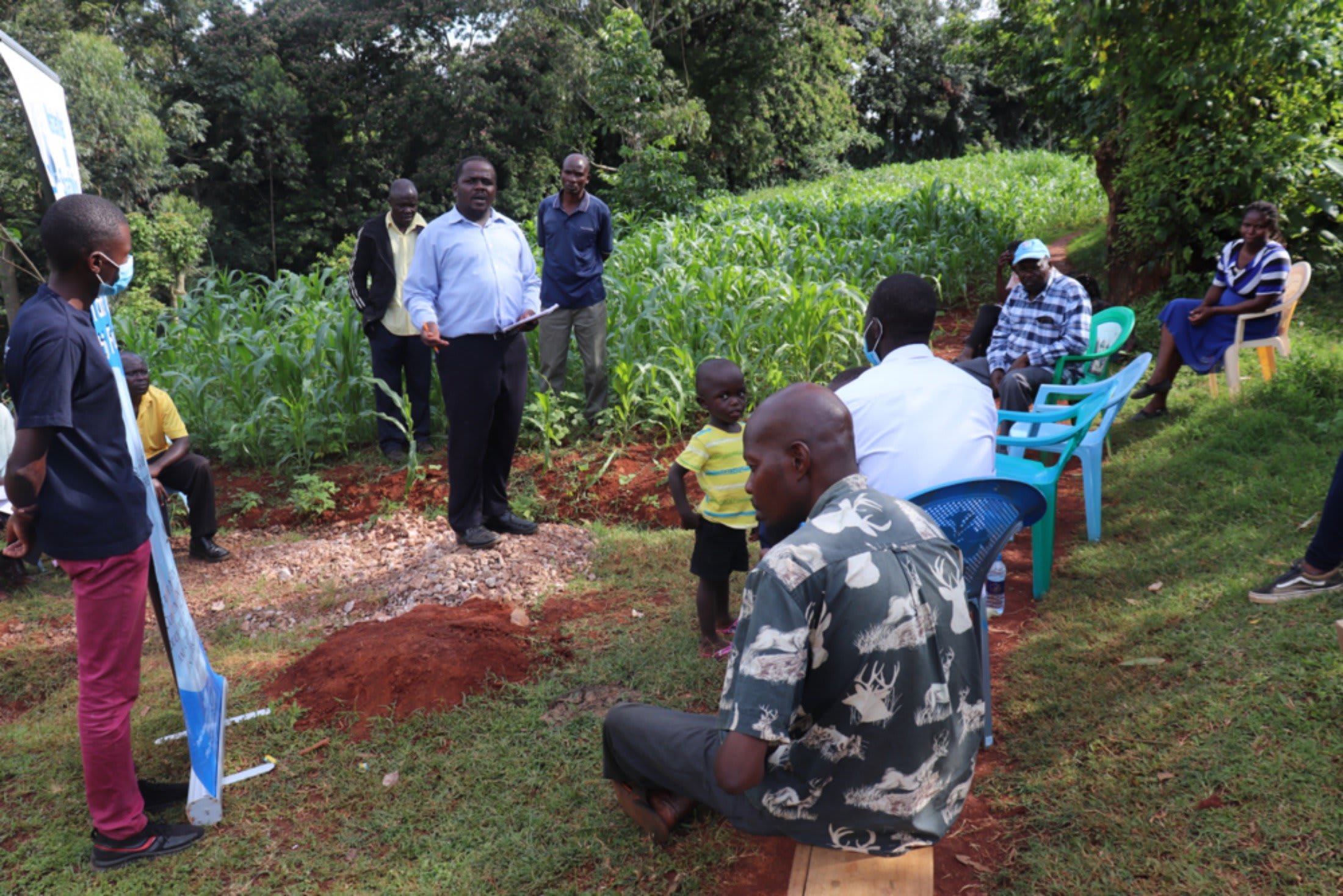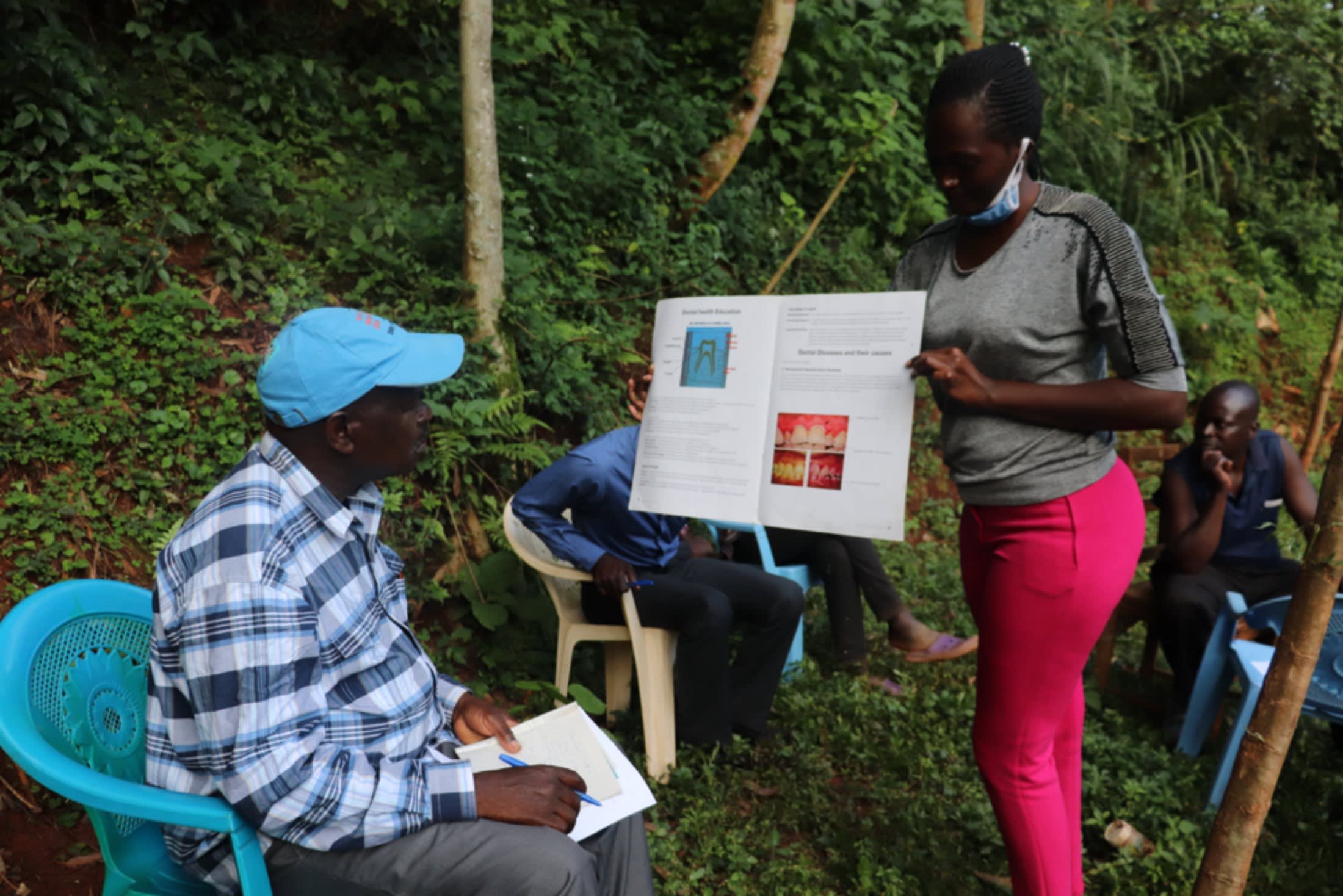The Shikoye area is green and greatly vegetative. It is in a periurban setting whereby the majority of the residents are tenants rather than homeowners. Most people here work as casual laborers or small-scale traders. A few own small plots of farms where they plant vegetables for family use. The money earned from these daily hustles is what keeps most families going on with their life.
Due to its setting, Shikoye enjoys a lot of influence from town. Everyone here appreciates the need to have safe latrines for use because, while in town, one has to pay to use these facilities. The same applies to water. These are commodities that are so precious to these people, giving the community a unique drive and perspective on wanting to improve their water access and sanitation at home.
People here scramble for their daily access to water, especially during the dry season. 385 people in Shikoye depend on Kwa Witinga Spring as their closest and only year-round water point, but the greater community here has over 1,000 residents. Community members who use seasonal water sources elsewhere for part of the year, and those who need water for their nearby businesses, often flock to Kwa Witinga Spring because of its dependability.
The path to Kwa Witinga Spring is steep at the main entrance, and there are no stairs to guide people in and out of the water point. Each household strives to collect as much water as possible each day so that they do not have to spend their hard-earned money on purchasing water from the market. A few who have animals also join in the struggle to fetch water for their flock. But, as they do this, they wade through the pool of water right before the water collection point. And as one leaves the source, extra care must be taken so that one does not slide back into the pool. Sometimes the worst happens and even people's jerrycans get destroyed in the unfortunate event that they slide and fall, sometimes getting hurt in the process.
Children sometimes opt to climb up and out of the spring over a steep wall, rather than trudge through the water again and risk slipping that way. Both routes are risky, and parents are continually worried they children will suffer injuries.
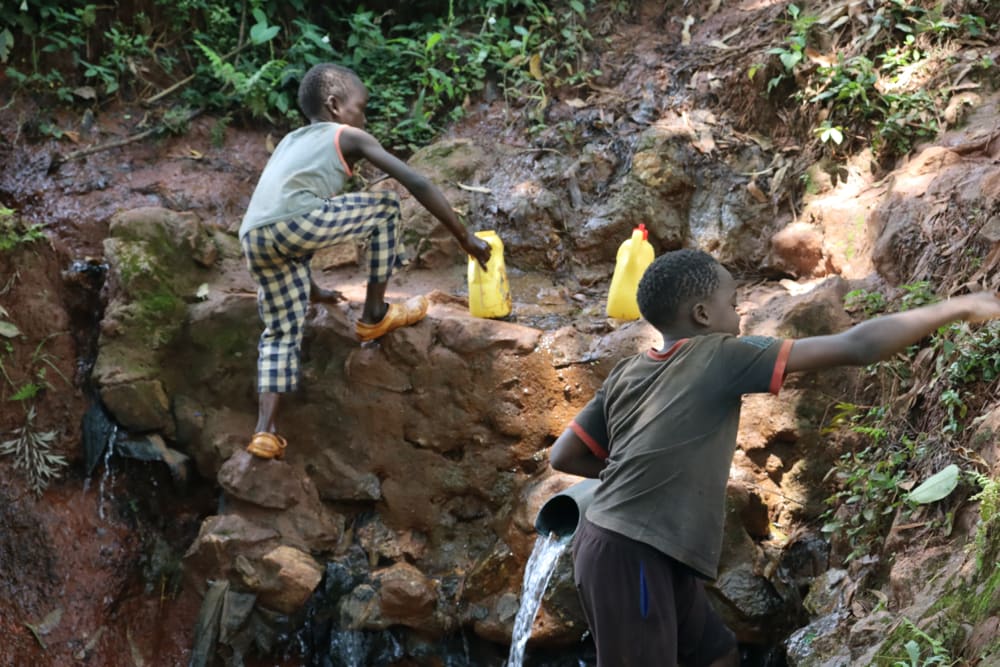
"It is always hard and tiresome to get water from the spring because we lack staircases. I hate to slide back into the pool of water when I go to collect water. Sometimes animals also come to drink water from the pool thus putting our life at risk," explained Bravine, a primary school-aged boy.
The spring water is unsafe for consumption because it is open to contamination by storm runoff, human activities, and animals. The runoff alone carries farm chemicals, residues from animal waste, and soil into the spring water.
"We are not sure about the safety of the water we are drinking," said Rita Aluka, a 23-year-old small-scale trader in the community.
Community members said that sore throat is always experienced after drinking this water, and more so by new spring users who have not adapted to it. Other more serious water-related illnesses such as typhoid and diarrhea cost people their time, energy, and a lot of money as they try to pay for medicine and hospital visits. Each day spend sick means less income-earning and productive time for adults, and fewer days in school for children.
To aid in fetching water, the community has tried to improve their spring in several ways but to no avail. To help improve water quality, they laid a plastic tarp over several areas where the spring water collects and flows. But without all of the necessary materials and technical expertise, they did not succeed in keeping the tarp buried or secured. Today it is visible, tattered, and not helping in their quest for clean water.
The community also tried to install a discharge pipe to create flowing water, which they have since done in two locations where the spring's water comes to the surface. So much water is still untapped between the two pipes, however, that it flows down the rock and mud wall around them. The original pipe was plastic and is now broken, open, and hard to reach. People use this plastic pipe as a secondary place to fill up while someone else uses the second pipe that they installed. This second attempt is a long metal pipe lodged into a rock and mud wall the community built to try to hold it in place along with the plastic tarp. Nevertheless, the pipe is rather loose and often dislodges soil into the water that flows through it.
What We Can Do:
Spring Protection
Protecting the spring will help provide access to cleaner and safer water and reduce the time people have to spend to fetch it. Construction will keep surface runoff and other contaminants out of the water. With the community’s high involvement in the process, there should be a good sense of responsibility and ownership for the new clean water source.
Fetching water is a task predominantly carried out by women and young girls. Protecting the spring and offering training and support will, therefore, help empower the female members of the community by freeing up more of their time and energy to engage and invest in income-generating activities and their education.
Training on Health, Hygiene, COVID-19, and More
To hold trainings during the pandemic, we work closely with both community leaders and the local government to approve small groups to attend training. We ask community leaders to invite a select yet representative group of people to attend training who will then act as ambassadors to the rest of the community to share what they learn. We also communicate our expectations of physical distancing and wearing masks for all who choose to attend.
The training will focus on improved hygiene, health, and sanitation habits in this community. We will also have a dedicated session on COVID-19 symptoms, transmission routes, and prevention best practices.
With the community’s input, we will identify key leverage points where they can alter their practices at the personal, household, and community levels to affect change. This training will help to ensure participants have the knowledge they need about healthy practices and their importance to make the most of their water point as soon as water is flowing.
Our team of facilitators will use a variety of methods to train community members. Some of these methods include participatory hygiene and sanitation transformation, asset-based community development, group discussions, handouts, and demonstrations at the spring.
One of the most important issues we plan to cover is the handling, storage, and treatment of water. Having a clean water source will be extremely helpful, but it is useless if water gets contaminated by the time it is consumed. We and the community strongly believe that all of these components will work together to improve living standards here, which will help to unlock the potential for these community members to live better, healthier lives.
We will then conduct a small series of follow-up trainings before transitioning to our regularly scheduled support visits throughout the year.
Training will result in the formation of a water user committee, elected by their peers, that will oversee the operations and maintenance of the spring. The committee will enforce proper behavior around the spring and delegate tasks that will help preserve the site, such as building a fence and digging proper drainage channels. The fence will keep out destructive animals and unwanted waste, and the drainage will keep the area’s mosquito population at a minimum.

 Protected Spring
Protected Spring
 Rehabilitation Project
Rehabilitation Project














